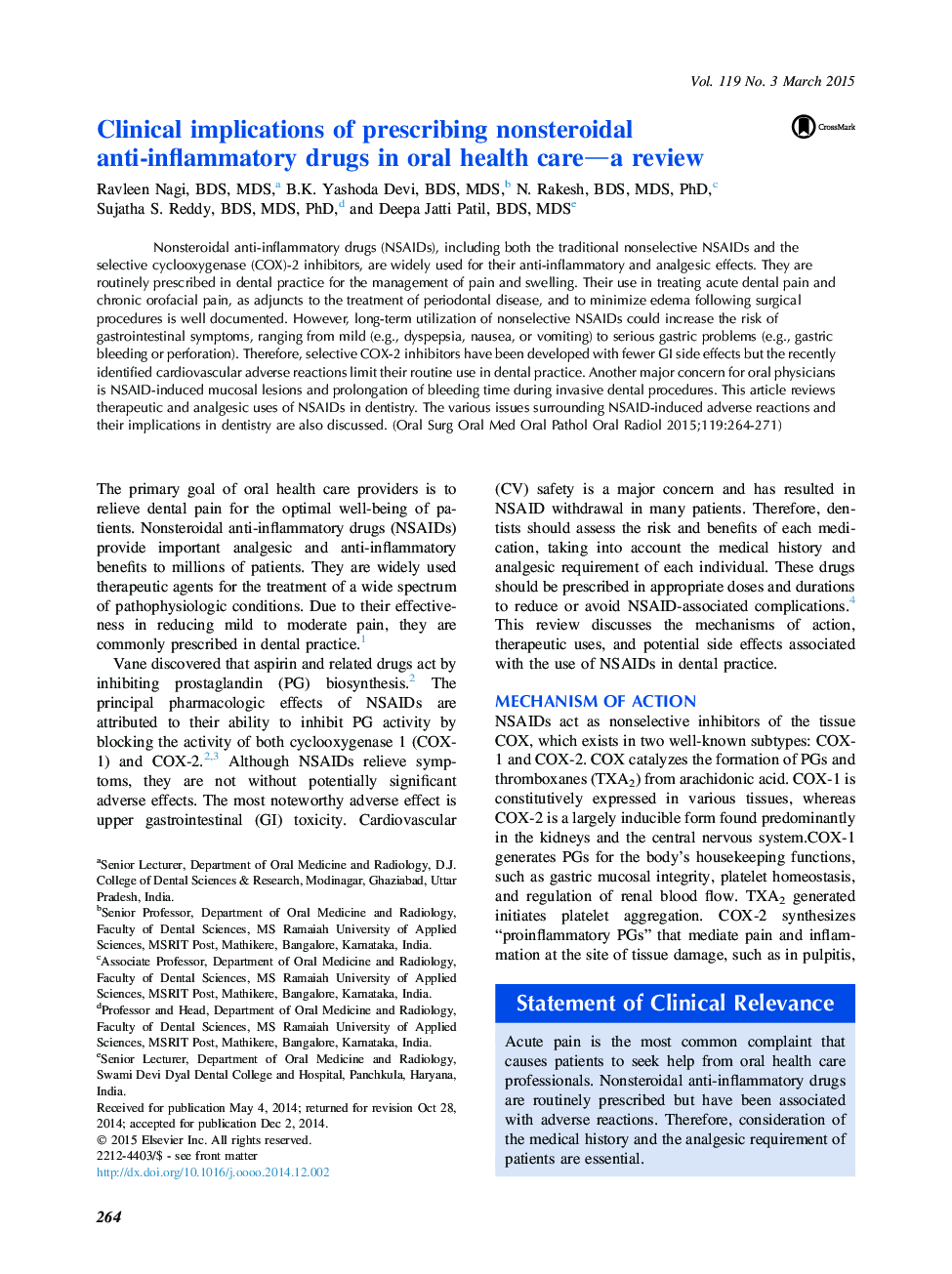| Article ID | Journal | Published Year | Pages | File Type |
|---|---|---|---|---|
| 6056327 | Oral Surgery, Oral Medicine, Oral Pathology and Oral Radiology | 2015 | 8 Pages |
Abstract
Nonsteroidal anti-inflammatory drugs (NSAIDs), including both the traditional nonselective NSAIDs and the selective cyclooxygenase (COX)-2 inhibitors, are widely used for their anti-inflammatory and analgesic effects. They are routinely prescribed in dental practice for the management of pain and swelling. Their use in treating acute dental pain and chronic orofacial pain, as adjuncts to the treatment of periodontal disease, and to minimize edema following surgical procedures is well documented. However, long-term utilization of nonselective NSAIDs could increase the risk of gastrointestinal symptoms, ranging from mild (e.g., dyspepsia, nausea, or vomiting) to serious gastric problems (e.g., gastric bleeding or perforation). Therefore, selective COX-2 inhibitors have been developed with fewer GI side effects but the recently identified cardiovascular adverse reactions limit their routine use in dental practice. Another major concern for oral physicians is NSAID-induced mucosal lesions and prolongation of bleeding time during invasive dental procedures. This article reviews therapeutic and analgesic uses of NSAIDs in dentistry. The various issues surrounding NSAID-induced adverse reactions and their implications in dentistry are also discussed.
Related Topics
Health Sciences
Medicine and Dentistry
Dentistry, Oral Surgery and Medicine
Authors
Ravleen BDS, MDS, B.K. BDS, MDS, N. BDS, MDS, PhD, Sujatha S. BDS, MDS, PhD, Deepa Jatti BDS, MDS,
